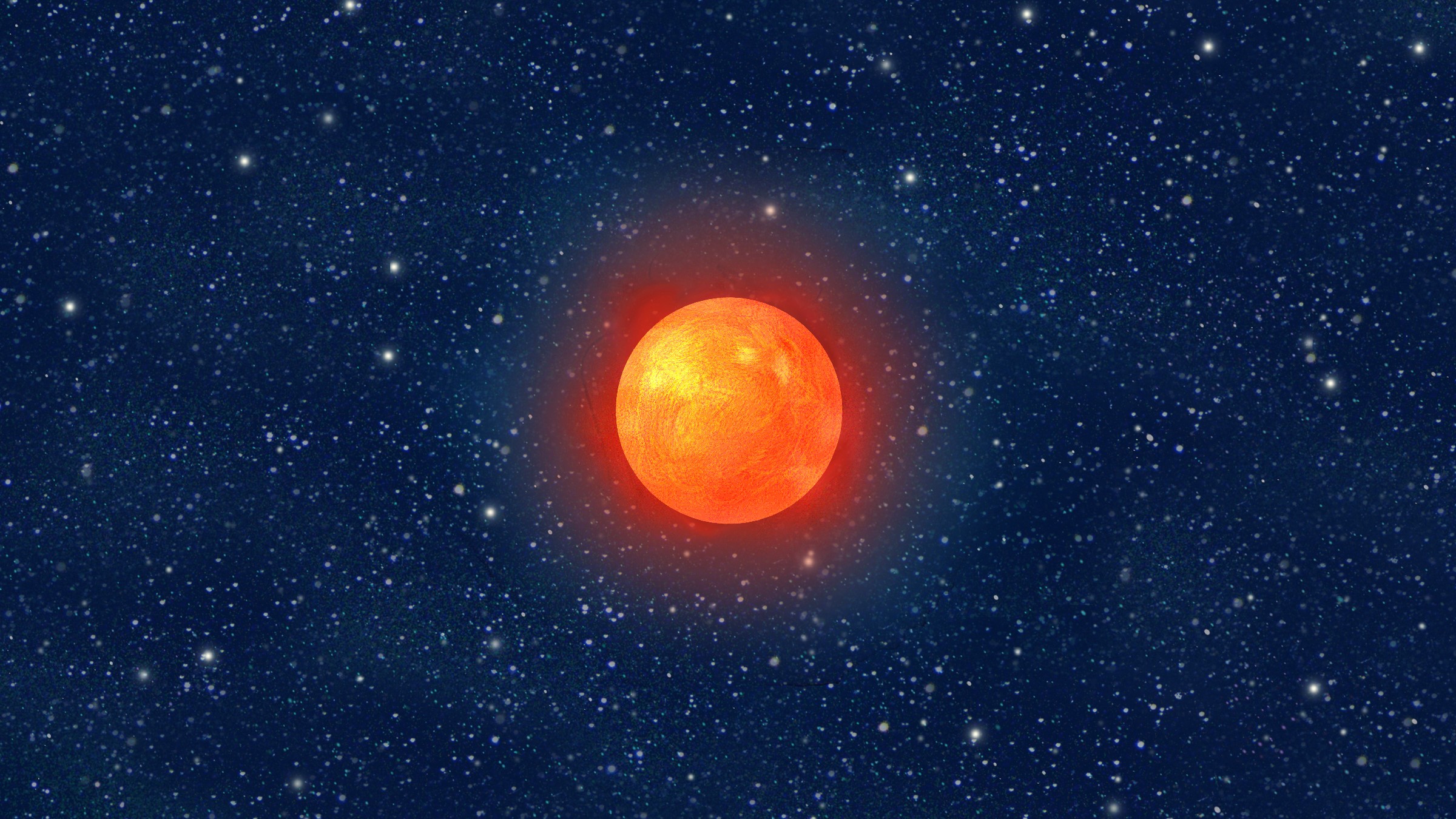
Astronomers have discovered a "failed" star that can't sustain nuclear fusion in its core, but is 3,600 degrees Fahrenheit (2,000 degrees Celsius) hotter than the sun thanks to its proximity to a stellar companion.
The failed star, also known as a brown dwarf, sits about 1,400 light-years from Earth and orbits an entity called a white dwarf. White dwarfs are cooling remnants of sun-like stars that ran out of fuel at the end of their stellar lives.
Brown dwarfs are curious inhabitants of the universe. During formation, these objects didn't manage to accumulate enough matter to ignite nuclear fusion processes in their cores and become proper stars. But on the other hand, they are a little too big to be called planets. The exceptionally hot brown dwarf described in the new study, for instance, is about 75 to 88 times as massive as Jupiter, the solar system's largest planet.
Brown dwarfs are also often hard to spot as they only emit residual heat left over from their formation. Even though they could be up to 4,500 degrees F (2,500 degrees C), many have surface temperatures of only a few hundred degrees. The newly discovered brown dwarf, named WD 0032-317B, however, has a surface temperature of over 12,600 degrees F (7,000 degrees C), making it the hottest brown dwarf ever observed, according to a statement. For comparison, the temperature of the sun's surface is about 9,900 degrees F (5,500 degrees C), which means this peculiar star is over 2,000 degrees F hotter than the sun.
Related: Friendless 'hot Jupiter' exoplanets may not be so lonely after all
This brown dwarf's unusual temperature is not a result of some sort of quirky internal process. Rather, it's due to its close proximity to that aforementioned white dwarf. Named WD 0032-317, it has been known to astronomers since the early 2000s.
Although this stellar corpse is no longer actively burning fuel inside, it's calculated to have an extremely hot surface temperature of about 66,000 degrees F (37,000 degrees C).
Therefore, as the brown dwarf orbits so closely to this white dwarf — closer even than Mercury is to the sun — it soaks up a ton of the remnant's radiation. This makes the side of the brown dwarf facing the white dwarf heat up to extreme temperatures, but leaves the side facing away much cooler with surface temperatures reaching a maximum of 4,900 degrees F (2,700 degrees C).
Scientists previously thought the superhot white dwarf was part of a binary system with another white dwarf. But measurements of light spectra, or the composition of light emitted by this strange object, revealed that the mysterious companion was, in fact, a brown dwarf. Those measurements were taken by the European Southern Observatory's Very Large Telescope in Chile.
This discovery is exciting not only because it signifies the hottest brown dwarf ever seen, but also because WD 0032-317B's large size and close proximity to its companion can help astronomers gain insights into processes that unfold in the atmospheres of hot Jupiters.
Hot Jupiters are Jupiter-like extrasolar planets, or exoplanets, that orbit their parent stars about as close as WD 0032-317B orbits its white dwarf buddy. Some even manage to complete a lap around their stars in just a few days. But because these hot Jupiters are much smaller, only up to ten times the size of Jupiter, they are much harder to detect in the glow of their parent stars.
With new, more powerful observatories, such as the James Webb Space Telescope, scientists expect to be able to detect these odd planets much more frequently — and having more detailed data from binary systems such as the WD 0032-317 duo might help them better interpret such future observations.
"Hot Jupiters are the antithesis of habitable planets — they are dramatically inhospitable places for life," Na'ama Hallakoun, a postdoctoral fellow in the Particle Physics and Astrophysics Department at the Weizmann Institute of Science and lead author of the study, said in the statement. "Future high-resolution spectroscopic observations of this hot Jupiter-like system — ideally made with NASA's new James Webb Space Telescope — may reveal how hot, highly irradiated conditions impact atmospheric structure, something that could help us understand exoplanets elsewhere in the universe."
The study was published on Monday (Aug. 14) in the journal Nature Astronomy.







